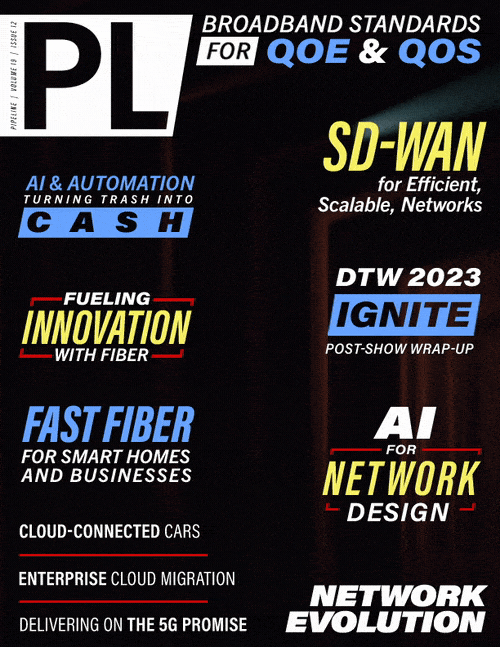Efficient, Scalable Network Architectures
To address these persistent challenges, several strategies warrant consideration.
Strategies for Selecting Network Architectures
Zero Trust Architecture for the Network: Zero Trust is a security concept that operates under the assumption that no user or device, whether inside or outside the network, can be trusted. It requires authentication and authorization for every user and device trying to access resources. Implementing Zero Trust minimizes the attack surface and enhances security.
Cloud/PoP-based Network and Security Solutions: Embrace cloud-based network security solutions that provide consistent and comprehensive protection for all network assets and traffic, regardless of location, SaaS services, applications in the cloud, and edges. A cloud/PoP-based solution offers scalability, flexibility, and cost-efficiency, especially for organizations with diverse and dynamic network environments.
Distributed Enforcement: Optimal throughput with lower latency is achieved when security enforcement occurs closer to clients. Consider solutions that enable distributed security and optimization functions, even at the customer premises equipment (CPE) level.
Deterministic Performance: Solutions that provide layer 2 middle-mile and mesh connectivity among multiple locations often deliver superior performance compared to shared middle-mile solutions. Solutions must allow for the provisioning of bandwidth changes to meet varying traffic demands.
Single Pane of Glass: Simplify configuration management by centralizing all networking and security functions through a single management interface.
As-a-Service Models with Co-Management: Managing software upgrades and maintenance for numerous appliances can be resource-intensive. Organizations are turning to network and security-as-a-service providers. Different configuration management options, including DIY, fully managed, and co-managed services, allow organizations to choose the option that best fits their risk tolerance and control preferences.
Observability: Beyond basic visibility and monitoring, seek observability solutions that encompass root cause analysis, threat hunting, AI/ML-based behavioral anomaly detection, and advanced alerting capabilities.
By implementing these strategies, modern organizations can optimize their network architectures, bolster security, and enhance overall operational efficiency.
SASE-as-a-Service
SASE-as-a-service encapsulates the essential elements needed concerning SD-WAN and network security.
SASE amalgamates various networking, network optimization, and security functions under a unified framework. The industry is progressively converging toward a “Unified SASE” approach. This entails a single-pass architecture with run-to-completion models, true single pane of glass management, and integrated observability.
A recent Dell’Oro Group report forecasts that total SASE solutions spending is poised to surpass $63 billion between 2022 and 2027. Unified SASE, within the broader SASE ecosystem, is gaining traction as the favored enterprise network security approach. The same Dell’Oro Group report indicates that Unified SASE is projected to exhibit a five-year compound annual growth rate (CAGR) exceeding 30% from 2022 to 2027, more than twice the rate of disaggregated SASE solutions.
SASE's allure stems from its capacity to furnish a unified architecture for networking, optimization, and security, deployable across the entire network landscape—comprising data centers, branch offices, and remote workforces.
SASE offers cloud-based security services that can be effortlessly updated and patched compared to traditional on-premises solutions. This responsiveness bolsters network security against emerging threats. SASE also delivers security services optimized for cloud environments, enhancing performance, scalability, and reliability for organizations.
By harnessing SASE-as-a-service, organizations optimize their network architecture, achieve advanced security, and enhance operational efficiency.
It’s also critical to understand the origin of the most common network performance and security issues.
Addressing Common Pitfalls and Solutions in Network Performance, WAN Optimization, and Security
Not all SASE solutions are created equal. Organizations must scrutinize critical aspects to ensure their chosen solution is future-proof, flexible, scalable, extendable, and capable of delivering the required performance.
Deterministic Performance Among Sites: Mesh networking reduces head-of-line blocking. Dedicated L2 links and bandwidth enforcement guarantee that an organization's traffic performance remains unaffected by traffic spikes from other entities.
WAN Optimization on TLS/SSL Traffic: Deduplication and compression for both TLS/SSL traffic and non-TLS/SSL traffic is important. Verify whether SD-WAN providers perform TLS inspection, as this is crucial given the prevalence of TLS/SSL traffic. Otherwise, WAN optimization features might not yield any benefits.
Avoid Hair-pinning: Select solutions that prevent traffic hair-pinning, especially in scenarios where clients and services are within the same office, cloud region, or VPC. Hair-pinning can introduce performance bottlenecks and latency. Some SASE solutions lack security enforcement on CPEs and vCPEs, forcing traffic to travel to nearby POP locations and back. Local security enforcement can alleviate this issue.



















